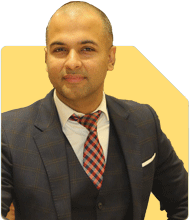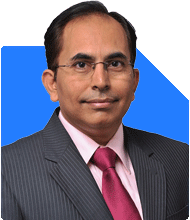
Dear Sir/Madam, First let me list down our holdings as of July 15, 2025. Self (Age 39) - Net Salary - 1.53 L Per Month; Variable Pay - 1 L Per Annum; Term Life Ins - 50 L; Health Ins - 5 L (Individual plan. Additional health cover provided by employer as well); 2 Houses - worth rs.50 L each (1 is yielding a rent of 8k per month); 1 Home Loan - EMI 20K (12 L Outstanding - Borrowed 26 L in Oct 2021 and reduced 14 L thru regular part payments); 1 Vacant plot - worth rs.7 L; Agri Paddy Field - ~3 L; NPS - 7.5 L; EPF - 8.5 L; NCD - 4 L (mature by 2030); Direct Stocks - 2.5 L; Mutual Funds - 19 L (all DIY - Direct Growth); MF Portfolio: (Axis Tax Saver 5K SIP since Aug 2016; Nippon India Index BSE Sensex Plan 1K SIP since May 2021; Edelweiss NIFTY LARGE MID CAP 250 INDEX Adhoc Lumpsum; TATA Digital India Fund: Tata Nifty India Tourism Index; Motilal Oswal Nifty India Defence Index: Mirae Asset Tax Saver Fund (for Wife)); Wife (age 31): Net Salary - 95 K Per Month; Variable Pay - 1.5 L Per Annum; 1 Commercial Go-down - Worth 1 Crore (Yielding 25 K rent Per Month); Gold - 300 Grams; NPS - 3 L; EPF - 3 L; Health Ins - 5 L (Individual plan. Additional health cover provided by employer as well); Our fathers are no more and our mothers are health insured; 1 kid (Boy) - 4 Yrs old (at Kinder-garden); Emergency Fund - 20 L. Question: I want to raise my son as an Archery sports person and provide him decent education as well (in Chennai metro city). My brother is less paid and he has two boy kids (5 yrs & 3 Yrs) and I want to support his kids' education as well. (living in semi-urban); Our monthly net income is 2.81 L (salaries, rents). Kindly formulate a plan for our future (wealth building, retirement, children - education, sports). Thanks a lot!
Ans: You have done many things right already. You are earning well, living within your means, and thinking of your family. You have real assets, a good emergency fund, and multiple investments. The intent to raise your son in sports and support your brother’s kids is admirable. Let us go step by step.
? Income and Cash Flow Assessment
– Your total family income is Rs.2.81 lakhs per month.
– This includes salaries and rental income.
– You have a home loan EMI of Rs.20000.
– You also get Rs.25000 rent from commercial property.
– The outflow seems manageable with this income.
You already keep aside Rs.20 lakhs as emergency fund.
This is well thought out. Please continue to keep it updated with inflation.
Ensure this is in a liquid mutual fund or sweep-in FD for easy access.
Now let’s move into goal planning and wealth building.
? Portfolio Overview and Observations
– You have Rs.19 lakhs in mutual funds.
– Most are in direct growth plans.
– You also hold index funds and thematic funds.
– NPS and EPF together have over Rs.19 lakhs.
– You have Rs.2.5 lakhs in stocks.
– You hold Rs.4 lakhs in NCDs.
– You own two houses and a commercial property.
– Your wife owns gold of 300 grams.
Overall, your asset mix is wide and strong.
But few gaps exist. Some assets may underperform long term.
We need to align all assets towards your family’s life goals.
? Disadvantages of Index Funds and Direct Mutual Funds
You hold multiple index funds. Also, all mutual funds are direct plans.
Problems with index funds:
– They simply copy market index.
– No active management.
– No outperformance during bull phases.
– Fall fully during bear phases.
– Cannot protect downside.
– Do not beat inflation well in the long run.
Problems with direct mutual funds:
– Lower cost, but no guidance or review.
– No support in selecting suitable funds.
– Risk of overlapping and over-diversification.
– Emotional decisions can hurt portfolio.
– No asset rebalancing or goal linking.
– Hard to track or monitor performance deeply.
You will benefit more from regular mutual fund plans
through a Certified Financial Planner.
They ensure portfolio reviews and better fund selection.
They help you match investments with real goals.
The service value is higher than the slightly higher cost.
? Plan for Your Son’s Sports and Education Journey
This is a meaningful and high-impact goal.
– Archery is a disciplined sport.
– Needs equipment, coaching, travel, and time.
– Start planning financially right away.
Do this:
– Estimate yearly coaching and sports costs.
– Allocate a SIP from now only for sports expenses.
– Use equity mutual funds with long-term view.
– Set aside Rs.10000 monthly towards this.
– Keep this portfolio separate from other goals.
Also, for his academic education:
– Set a separate goal-based investment for school and college.
– Education in Chennai metro will be costly.
– Keep Rs.10000 per month as SIP for education.
– Choose 2-3 well-managed diversified equity mutual funds.
– Keep reviewing yearly and increase SIP over time.
This dual-approach ensures your son gets exposure to both
sports and studies without any funding stress.
? Planning Support for Brother’s Children
This shows your long-term vision and care for your extended family.
They stay in semi-urban area, so education costs may be moderate.
Still, cost will increase over time.
– You can help them through a dedicated fund.
– Start SIP of Rs.5000 per month for this purpose.
– Invest in equity mutual funds with 10-15 year view.
– Withdraw only for their college or higher education.
– Let the fund grow untouched till then.
Keep this separate from your own child’s funds.
It avoids confusion and keeps planning clear.
Also, educate your brother about savings and child education plans.
Guide him to start small SIPs or open Sukanya or PPF accounts.
? Retirement Planning – Your and Your Wife’s Future
You are 39. Your wife is 31. You both have 20-25 years to build retirement wealth.
This time is very important.
Currently you have:
– Rs.7.5 lakhs in NPS
– Rs.8.5 lakhs in EPF
– Rs.3 lakhs NPS (wife)
– Rs.3 lakhs EPF (wife)
These are good. But not enough alone.
What to do:
– Start dedicated SIP for retirement.
– Invest Rs.15000 per month from your income.
– Your wife can invest Rs.10000 monthly.
– Use equity-oriented mutual funds.
– Choose regular plans with CFP-backed guidance.
– Review once every year.
Avoid depending on real estate or gold for retirement.
They are not liquid or tax efficient during old age.
Mutual fund retirement corpus can be withdrawn in parts.
Tax on equity funds is also predictable.
NPS is locked till 60. Use it as support only.
Don’t rely fully on it.
Build a retirement plan that keeps you comfortable
even if rental income slows down or stops later.
? Review of Existing Real Assets and Loans
You have:
– Two houses (Rs.50 lakhs each)
– One commercial go-down (Rs.1 crore)
– One vacant plot (Rs.7 lakhs)
– Agri paddy field (Rs.3 lakhs)
Out of this, only one house and go-down are yielding rent.
Second house and vacant land are not productive now.
Also, gold of 300 grams is passive holding.
Suggestions:
– Don’t increase real estate further.
– Avoid buying new plots or homes.
– Real estate gives low returns over time.
– High cost, low liquidity, and poor taxation.
– Maintenance and legal issues increase in old age.
Instead:
– Focus on mutual funds for growth.
– Mutual funds are liquid, diversified, and efficient.
– You can withdraw partially for goals.
Your current EMI of Rs.20000 is fine.
Loan balance is only Rs.12 lakhs.
Try to close it in 3 years.
Use bonuses or surplus rent for closure.
? What You Should Do with Gold and Stocks
You hold 300 grams gold.
This is fine as safety asset.
Do not invest more in gold going forward.
Returns are low and erratic.
Better to use mutual funds or EPF/NPS.
You also have Rs.2.5 lakhs in direct stocks.
Ensure this is in quality companies.
Don’t increase stock investing unless you have expertise.
Stocks need time and knowledge.
Mutual funds offer better risk handling.
Focus more on mutual fund SIPs for all goals.
? Insurance Coverage Review
You have:
– Rs.50 lakhs term insurance (self)
– Rs.5 lakhs health insurance (each)
– Additional corporate health cover
Suggestions:
– Increase term insurance to Rs.1 crore minimum.
– For your wife, take Rs.50 lakhs term cover.
– This protects your son if anything happens.
– Corporate health insurance is not permanent.
– Keep separate retail health plans active always.
Also, include critical illness riders if possible.
Medical inflation is very high.
? Estate Planning – Very Important for Families Like Yours
Since both your fathers are no more,
You understand the need for clarity in future.
– Prepare a Will for both husband and wife.
– Mention all assets clearly.
– Assign guardianship for your son.
– Include your intention to support your nephews.
– This avoids confusion and legal issues later.
Also, keep nominee details updated in:
– Mutual funds
– NPS and EPF
– Bank accounts
– Insurance policies
This brings peace of mind and security.
? Ideal Monthly Budget Structure from Your Current Income
You earn Rs.2.81 lakhs monthly.
You can follow this ideal budget model:
– 30% for all household expenses (Rs.84000)
– 10% for EMI and loans (Rs.20000)
– 10% for insurance premiums (Rs.20000)
– 40% for investments and goals (Rs.1.12 lakhs)
– 10% for lifestyle, travel or miscellaneous (Rs.28000)
This way you enjoy life, stay protected, and build wealth peacefully.
? How to Monitor Your Plan Every Year
Each year, do these 5 reviews:
– Check if SIPs are linked to your goals
– Increase SIP amounts as income grows
– Review mutual fund performance
– Track actual cost of sports and education
– Ensure insurance and emergency funds are adequate
A Certified Financial Planner can do this yearly review.
This keeps your plan aligned and stress-free.
? Finally
You are financially strong today.
You have a good mix of income, assets, and savings.
You care about your family and extended family.
You are future-focused and responsible.
Please take the next steps now:
– Shift your direct mutual funds to regular plans through a CFP
– Exit index funds and thematic funds gradually
– Stick to diversified actively managed equity funds
– Allocate funds to son’s sports and education
– Start retirement SIPs immediately
– Review term and health covers
– Complete your Wills this year
– Avoid more real estate or gold investments
With this 360-degree plan, you can reach your goals peacefully.
You can raise your son with values, health, education, and talent.
And also uplift your brother’s kids quietly and strongly.
Best Regards,
K. Ramalingam, MBA, CFP,
Chief Financial Planner,
www.holisticinvestment.in
https://www.youtube.com/@HolisticInvestment

























